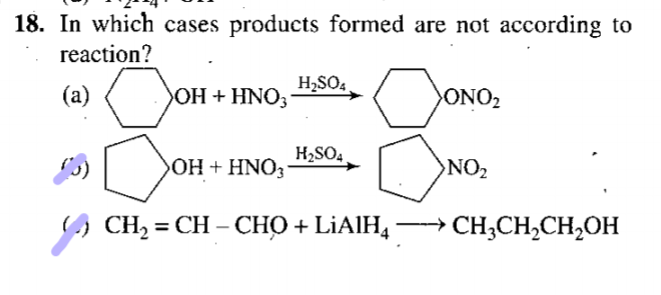Here I expected (b) to happen via nucleophilic substitution, but contrary to that (a) is the one occuring. What exactly is happening here?
-
3$\begingroup$ I’m voting to close this question because it's a bunch of crappy pictures. Up your game. ChemSE is, without a doubt, the best resource for all things chemistry-related. Play the game, get rewarded. $\endgroup$– Todd MinehardtCommented Jul 12, 2020 at 3:56
1 Answer
The reaction given in options (a) and (b) are called formation of nitrate esters. The following nitrate ester is called "ethyl nitrate",
Firstly, $\ce{HNO3}$ and $\ce{H2SO4}$ reacts to form the $\ce{E+}$. As we know, the former is relatively weaker acid than the latter, therefore $\ce{HNO3}$ donates $\ce{OH-}$ and neutralisation takes place,
$$\ce{H2SO4 + HNO3 -> H2O + HSO4- + NO2+}$$
So, here electrophile is $\ce{NO2+}$, which gets attacked by lone pairs of alcoholic oxygen and finally gives "nitrate ester" as shown correctly in (a).
(Here is a video explanation of the mechanism by Sal, KhanAcademy)
So, according to me, I guess (b) and (c) are not according to the reaction, hence they should be correct.
Further, if anyone is interested in (c), they should have a look at the answer in Why does NaBH4 reduce double bonds conjugated to carbonyl groups, while LiAlH4 does not?

